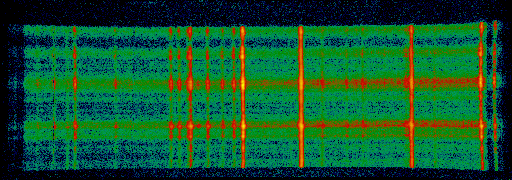 SUMER Data Availability
SUMER Data Availability SUMER Data Availability
SUMER Data Availability

On-board, this detector image (or subsets thereof) can be aggregated and/or compressed. The result is sent down (compare Telemetry Format Table under "spectrohelio1" description in our Operations Guide), together with a descriptional header, containing information such as: when the image was taken, where the telescope was pointed, which detector was exposed and how long, which wavelength was situated where on the detector, which slit and raster step was used, etc. (Notice on coordinates!)
These telemetry data are put on CD-ROMs by NASA, and they are also put together as FITS files in the EOF (cf. comments by Nicolas Morisset). These FITS files contain an additional descriptive header, including information from the planning process. But even with this and the use of SUMER publications, it may be hard to work with SUMER data all by oneself; for this reason the involvement of SUMER Co-Investigators is strongly encouraged.
For most of the time, the SUMER team was not funded to make data available to the general public, instead we have made the data available to ESA/NASA for this activity. Their SOHO Main Catalogue includes SUMER FITS files and a search facility. - Since May 2001, the MPS computer centre has set up a web-based system (SUMER Image Database) which allows to browse through and download SUMER images. Policies concerning access to SUMER data are stated below.
The SUMER Gallery will grow as more and more data is analyzed. Together with the instrument's description, it is the closest we have to something that can be termed "educational" ... but then you can always visit SOHO Explore.
WHO ACCESS TO LIMITATIONS
--- --------- -----------
PI and Full SUMER data set; Subject to data analysis
CoIs protect exclusive rights coordination scheme;
defined below inform PI
Associated Full SUMER data set after 9 Subject to data analysis
Scientists months; protect exclusive coordination scheme;
rights defined below inform PI
Specific Limited data set related At least one CoI must be
Observations: to their specific involvement involved and co-author
of publications
'Official guest' Limited data set (POP/JOP/UDP At least one CoI should be
investigators or other observations) in which involved, or more if
(at least one CoI they are involved, exclusive the objectives and
involved guiding right on this set until data observations demand this
the investigation) will go to public domain
'Inofficial guest' Limited data set (POP/JOP/UDP At least one CoI must be
investigators or other observations) in which involved, or more if
(at least one CoI they are involved, exclusive the objectives and
involved guiding right on this set until data observations demand this
the investigation) will go to public domain
Change in policy
The policy defined above was successfully applied until 26 April 2000. From then onwards, the SUMER data will be in the public domain as soon as they become available.
The SUMER team would continue to be interested in coordinating the data evaluation effort along the lines outlined above. At the very least, we would expect to be informed of any resulting publication.
IED 22 May 2001